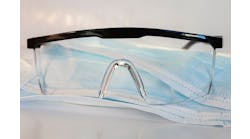There’s no shortage of challenges in the collision repair industry. If this isn’t an industry you’re passionate about being a part of, I could offer a long list of alternative professions that would produce less anxiety.
From new technology to a shortage of quality staff to insurance battles and so on, the daily challenges shop operators face are big. But for those of you who love what you do each day, who have found a way to grow despite it all, you know that no challenge is insurmountable.
Even the constant drum of industry consolidation—the steady stream of news announcing the latest acquisitions—is just another challenge.
I had lunch with a shop owner not long ago who said one of his biggest challenges was competing with the MSOs that had grown large and powerful in his market. He’s running a solid business, doing roughly $2.4 million out of less than 10,000 square feet. Like many who have found success in this industry, he prides himself on strong customer service and quality work.
To compete, he started doing what the MSOs in his market do—regularly tracking performance metrics, standardizing processes and investing in training—while still upholding the personal touch his shop is known for. He is maintaining his reputation, but adapting at the same time.
I think we can all see that big consolidation news like Service King’s April acquisition of Sterling Autobody will continue. In our Q&A with Marx Group CEO Tom Marx this month, he lays out three options for shops: close, sell to a consolidator, or find a way to thrive in the changing market.
“The independent shop can thrive in this environment by offering superior quality and service when compared to competitors, whether they be other independents, MSOs or chains,” Marx says.
Shops will need to decide which route they want to take and plan accordingly. But, as Marx points out, the only option that does not involve business changes and improvements is the one that is least attractive: shutting down. That’s because to be acquired, a shop has to prove its mettle.
“Operations and processes must be well-defined and efficient, customers and employees happy, marketing happening to build your brand, a good website in place and a very clean and healthy financial statement produced monthly,” Marx says.
So, what is your plan for the future, where does your shop stand, what do you need to do to reach your end goals? Will you meet the industry’s challenges head on or succumb to them?
This conversation isn’t always comfortable for an owner, but the sense of urgency should be greater than ever before. It’s never too early to start putting together a long-term plan for your shop, but you can definitely be too late.
Jake Weyer, Editor
[email protected]




